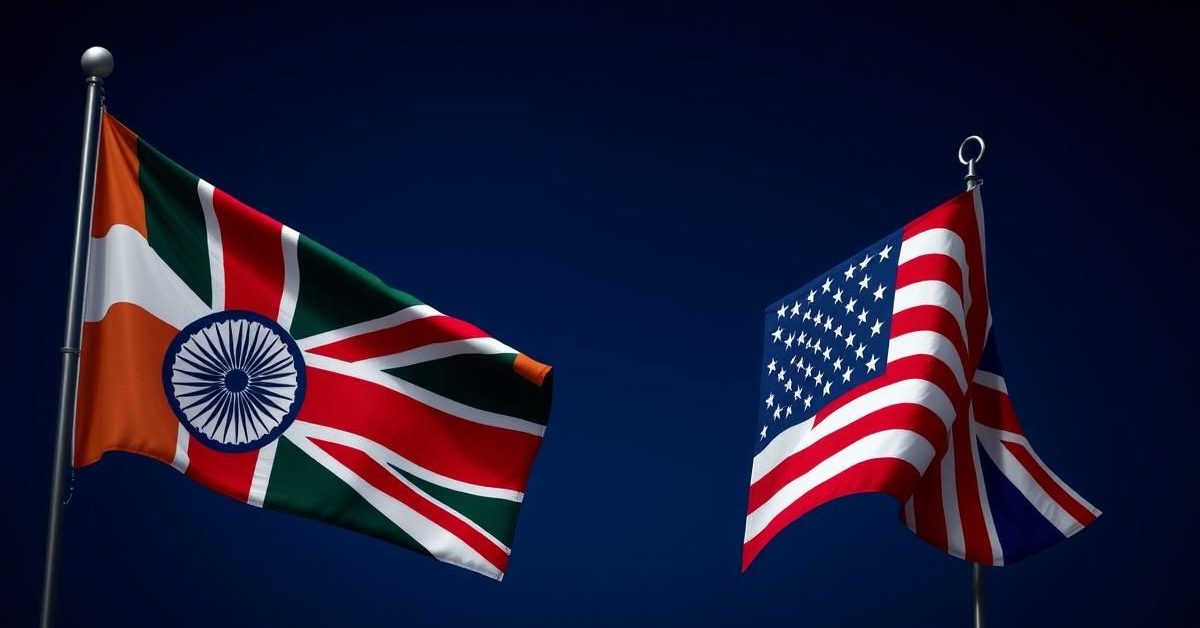The recently concluded India-UK trade deal holds significant implications, not just for both nations but also as a potential blueprint for India’s upcoming and highly anticipated trade pact with the United States.
A Landmark Agreement for Both Sides
For the United Kingdom, this agreement is arguably its most substantial trade deal since Brexit. It marks a pivotal moment in its post-EU economic strategy.
Meanwhile, for India, this represents its first major trade pact with a leading Western economy since the broad-based European Free Trade Association (EFTA) deal inked last year. It signals India’s growing engagement with global trade partners.
Paving the Way for the US Deal
The India-UK deal is being closely watched as it could set crucial precedents for India’s ongoing negotiations with the European Union. More importantly, it offers valuable insights into India’s negotiating approach for its most critical upcoming agreement: the trade pact with the US.
Talks between India and the US have been moving at a rapid pace, with a recent week-long negotiation round aimed at finalizing an interim trade deal. This urgency is driven by the need for India to navigate potential reciprocal tariffs and gain an advantage over its Asian competitors, especially with a looming August 1 deadline.
Agriculture: A Key Red Line
Agriculture has emerged as a particularly sensitive area in both sets of negotiations. In the UK deal, India maintained strict exclusions for high-sensitivity agricultural products like dairy items, fresh apples, and certain seeds.
Similarly, the UK protected its own agricultural interests by excluding various meat and egg products. In talks with the US, India is facing pressure for market access for genetically modified (GM) products, but farmers’ bodies are urging the government to safeguard domestic agricultural interests.
Tariffs and Market Access
The focus of the US trade deal is likely to be on headline tariff numbers rather than specific sectors. Following the UK deal, India’s average tariff on British products is expected to significantly drop from 15% to 3%.
For the US deal, New Delhi hopes for a tariff advantage over its Asian rivals. A tariff offer from Washington D.C. between 10% and 15% (similar to what was offered to the UK and Japan) would be favorable. However, tariffs exceeding 15% would diminish this advantage. Negotiators are also closely watching potential US tariffs on China, as this could impact India’s competitive position.
Strategic Concessions: Cars and Spirits
India demonstrated a strategic approach in the UK deal by offering concessions in areas where it sought mutual benefits. For instance, duties on Scotch whisky will be halved to 75% initially, then reduced to 40% over ten years.
Import duties on British cars will also be phased down over 15 years to just 10% for luxury models. However, these reduced rates apply to a limited quota of vehicles, primarily large engine-size internal combustion vehicles and high-priced EVs, strategically protecting India’s domestic automotive industry.
Mobility and Labour-Intensive Sectors
Worker mobility, a contentious issue in post-Brexit UK, saw some concessions, though India maintained regulatory carve-outs in areas like legal services. A significant positive is the Double Contributions Convention, which simplifies social security for workers temporarily employed in the other country.
India is also aggressively pushing for market access in labour-intensive sectors. In textiles, for example, the reduction of tariffs from 9% to zero in the UK market is expected to significantly boost India’s market share, helping it compete more effectively with countries like China and Bangladesh.
- The India-UK trade deal serves as a template for future negotiations, especially with the US.
- Agriculture remains a “red line” for India in both UK and US trade talks.
- India seeks a favorable tariff differential with the US compared to other Asian nations.
- Strategic concessions on products like cars and whisky are designed to protect domestic industries while opening limited market access.
- Efforts are ongoing to improve market access for Indian labour-intensive sectors and address worker mobility.
These lessons from the UK agreement are expected to heavily influence India’s strategy as it strives to finalize the crucial trade agreement with the United States.














